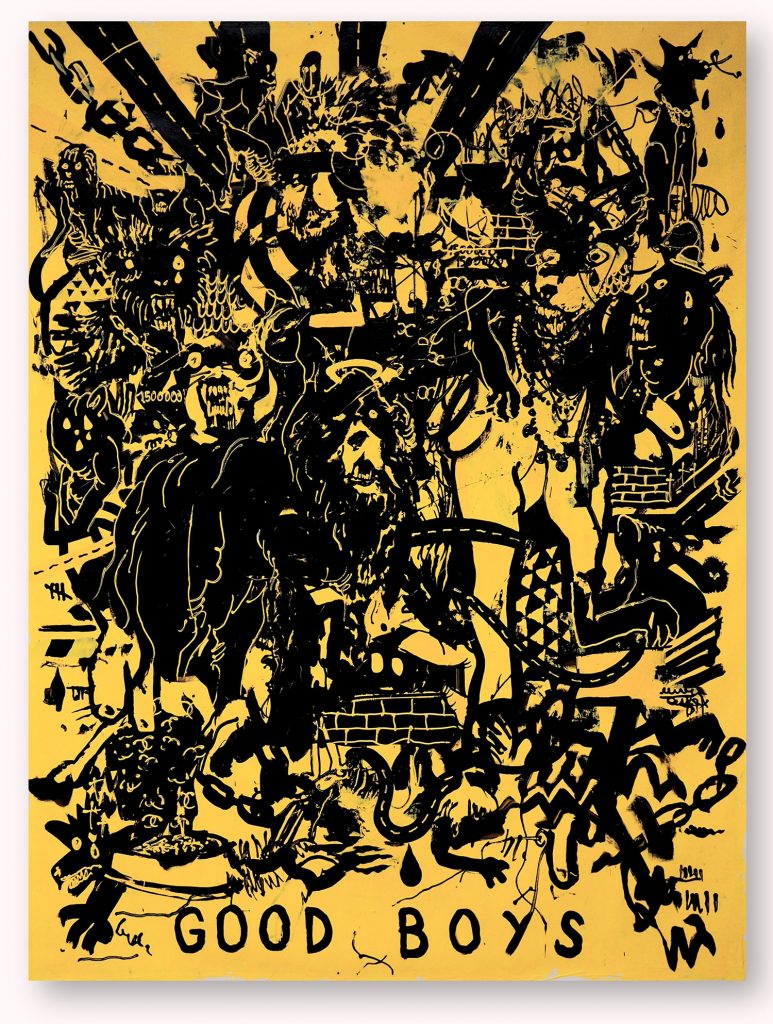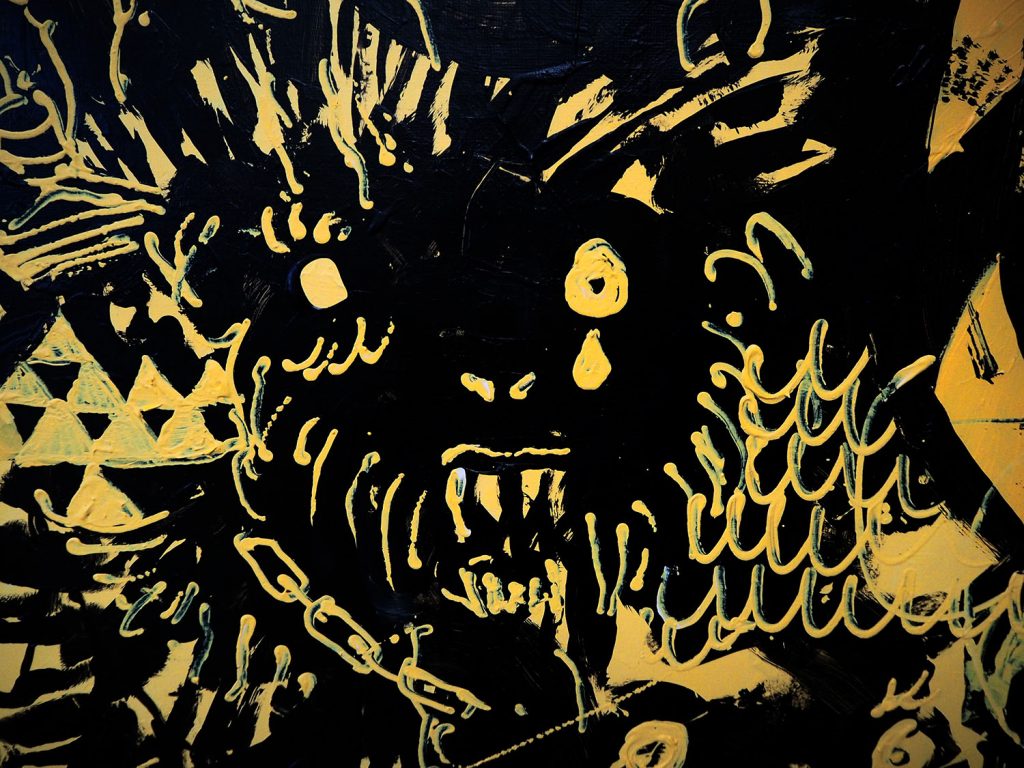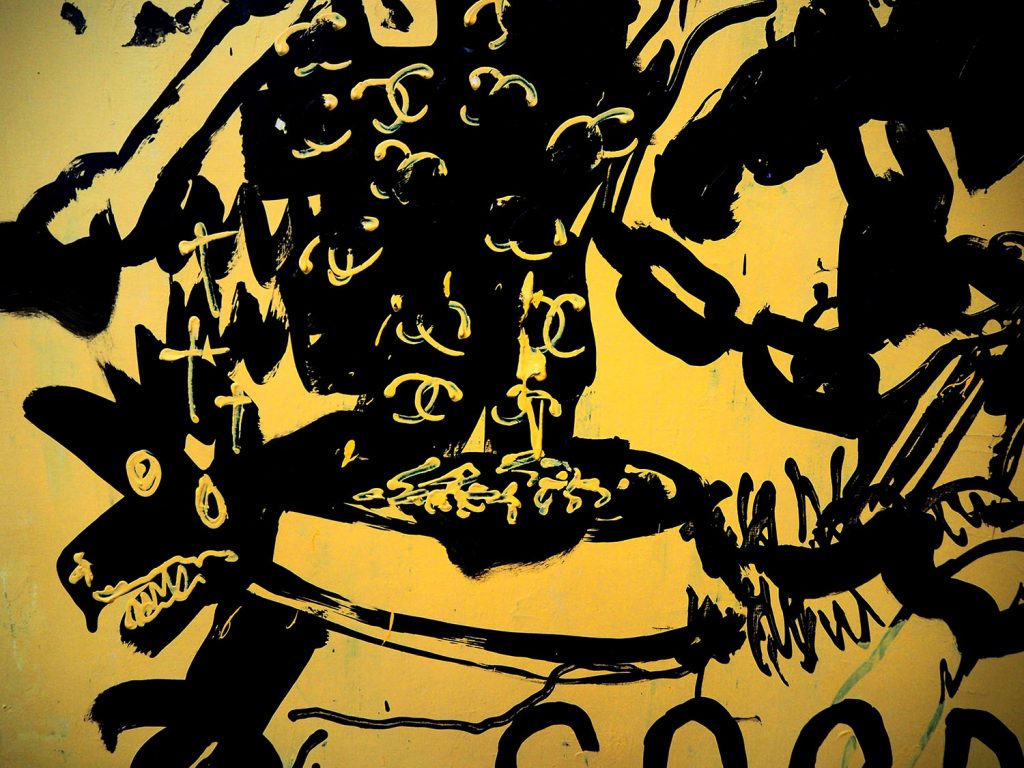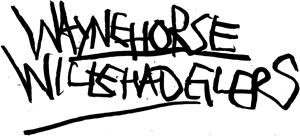GOOD BOYS
Painting
Ink and Acrylic on Canvas
145cm by 190cm
2018
The late 2000s saw a craze for Tibetan mastiffs, which prompted a frenzy of breeding and selling in the Tibetan regions.
This enthusiasm lasted till the mid-2010s.
Driven by demand from Chinese nouveau riche, including coal tycoons, some premium purebreds were sold for over US$200,000 (1.3 million yuan) during the height of the craze. Many people, both inside and outside of the Tibetan regions, bred dogs for purely commercial purposes. The breed became the worlds most expensive.
The bubble burst around 2013, when prices plummeted suddenly. In early 2015, New York Times reported that around 20 mastiffs were stuffed into a truck and sent to a slaughterhouse in northeast China where, “at roughly US$5 (35 yuan) a head, they would have been rendered into hot pot ingredients, imitation leather and the lining for winter gloves.”
As the booming market collapsed, and as more nomadic families settled down into city life, demand for Tibetan mastiffs continued to fall.
“Before 2010, almost every household was investing a lot of money into feeding and breeding mastiffs. A limited number of people succeeded, but most just got poorer,”
Tashi Gongbao said that some crossbreed dogs lost the loyalty so valued in mastiffs, and even turned on their own masters. This had a critical impact upon the breed’s image, causing a surge in dogs being abandoned by callous owners and breeders, resulting in a large number of strays.
With the buyers gone, the breeders soon disappeared. Zhou Yi, the chairman of the Qinghai Tibetan Mastiff Association, told the Xinhua News Agency in early 2015, that about a third of breeders in Tibet have closed their businesses, and the annual trade in Tibetan mastiffs in Qinghai had dropped from over 200 million yuan (US$29 million) to less than 50 million yuan (US$7.2 million).
With no measures taken by the local government the number of abandoned dogs has grown rapidly resulting in numerous attacks on people.



